Two source are placed on x-axis at a separation . An observer starts moving from A on a circular track of radius R . How many bright points and dark points will he observer?
Find the angular positions of maxima and minima.
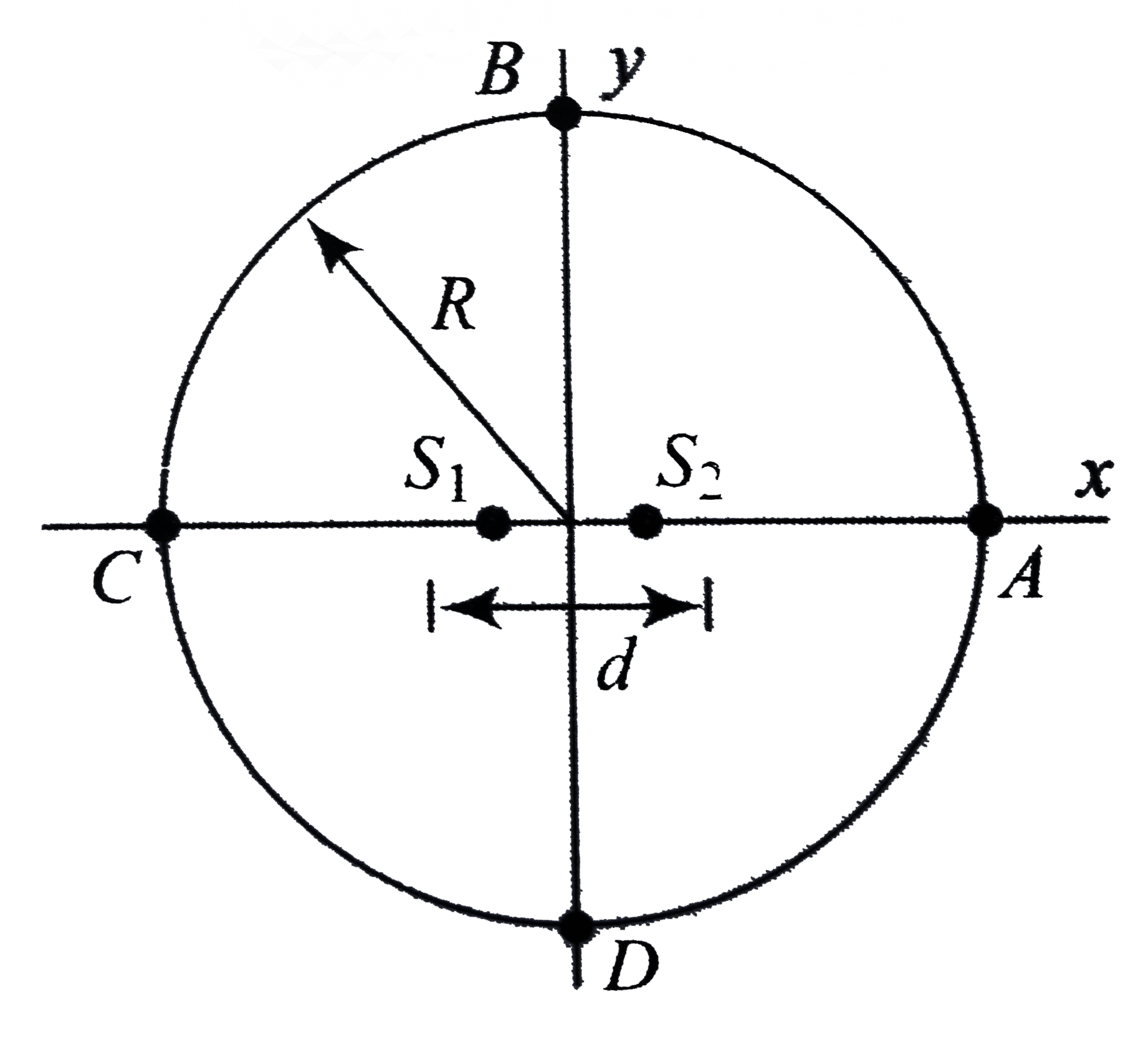 .
.
The observer will have maximum path difference at position A and C equal to
Minimum path difference equals to zero at position B and D.
In each quarter circle, he will have path difference between 0 and
path difference corresponding to maxima in our given range is 0, .
Path difference corresponding to minima inour given range is .
Hence total number of bright point in the complete circular path is .
Total number of dark points on circular path is .
Hence, the observer will find 12 bright points and 12 dark points in the circular track.
Finding angular positions of maxima and minima:
Path difference at point P.
Hence,
For Maxima,
For minima,
 .
.
Topper's Solved these Questions
- WAVE OPTICSBOOK - CENGAGE PHYSICSCHAPTER - WAVE OPTICSEXERCISE - Solved Examples
10 Videos
- WAVE OPTICSBOOK - CENGAGE PHYSICSCHAPTER - WAVE OPTICSEXERCISE - Exercise 2.1
12 Videos
- THERMODYNAMICSBOOK - CENGAGE PHYSICSCHAPTER - THERMODYNAMICSEXERCISE - QUESTION BANK
34 Videos
- WAVESBOOK - CENGAGE PHYSICSCHAPTER - WAVESEXERCISE - QUESTION BANK
38 Videos
Similar Questions
Two point sources are placed on a straight line separated by a distance d=3λ. Both the sources are placed at a distance L from a wall which is perpendicular to the straight line. Both the sources are sending waves of equal intensity.
Find:
a. Locus of the points on the wall having equal intensity.
b. Maximum and minimum path difference observed on the wall.
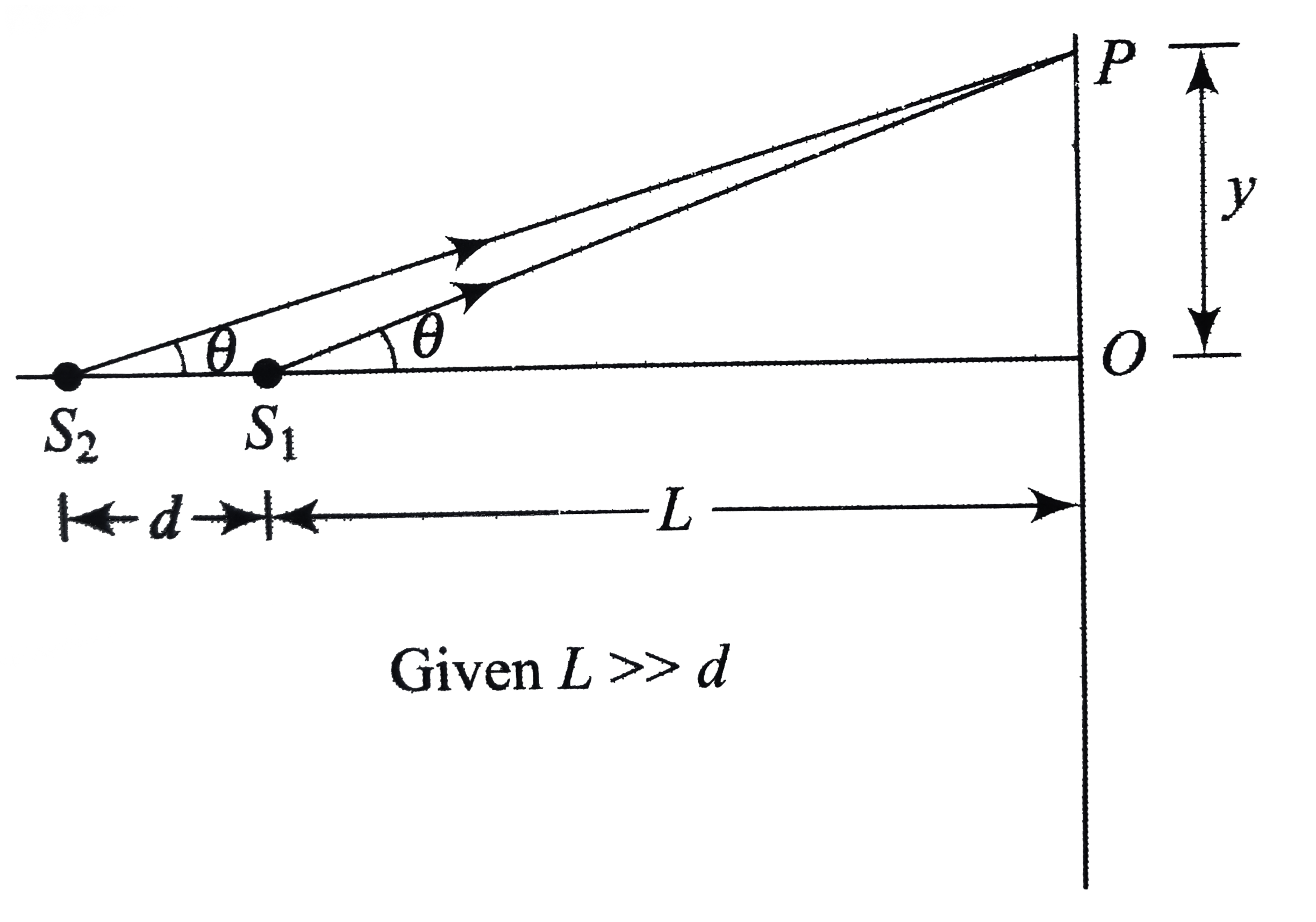
View SolutionFigure shows two coherent sources S1 and S2 which emit sound of wavelength λ in phase. The separation between the sources is 3λ. A circular wire of large radius is placed in such a way that S1S2 lies in its plane and the middle point of S1S2 is at the centre of the wire. Find the angular positions θ, on the wire for which constructive interference takes place.
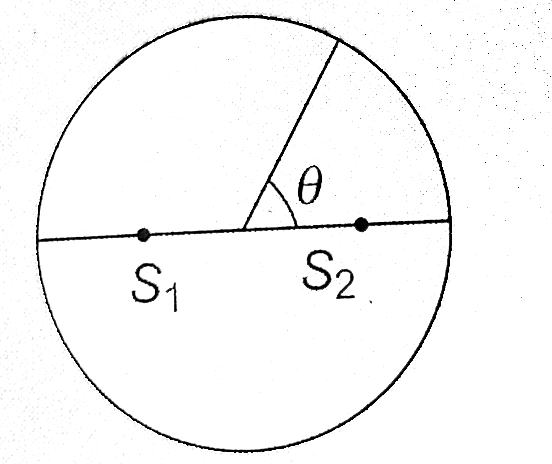
View Solution
Knowledge Check
Two sources of sound are placed along the diameter of a circle of radius R(R>>41). How many minima will be heard as one moves along the perimeter of circle.
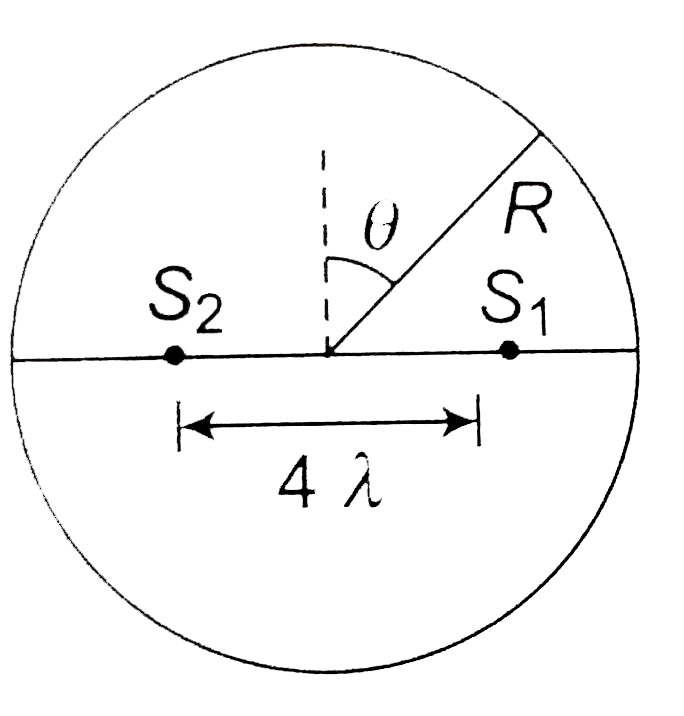 A12B16C4D20
A12B16C4D20Two monochromatic (wavelength =a/5) and coherent sources of electromagnetic waves are placed on the x-axis at the point (2a,0) and (−a,0). A detector moves in a circle of radius R(>>2a) whose centre is at te origin. The number of maximas detected during one circular revolution by the deterctor are -
A60B15C64DnoneTwo coherent sources separated by distance d are radiating in phase having wavelength λ. A detector moves in a big circle around the two sources in the plane of the two sources. The angular position of n=4 interference maxima is given as
 Asin−1(nλ)dBcos−1(4λd)Ctan−1(d)4λDcos−1(λ)4d
Asin−1(nλ)dBcos−1(4λd)Ctan−1(d)4λDcos−1(λ)4d
In Fig. 3.12 a particle moves along a circular parth of radius r. It starts from point A and moves anticlockwise. Find the distance travelled by the particle as it : moves A to D
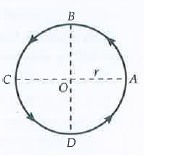
View SolutionSound from a point isotropic source spreads equally in all directions in homogeneous medium. Therefore its intensity decreases with square of distance from the source. When distance between observer and the source changes, apart from changes in intensity, the observer listens sound of pitch higher or lower than actual pitch depending upon the fact that the distance between the observer and source is decreasing or increasing respectively. An observer O is at a distance 2R from centre of a circle of radius R. A point isotropic sound source S moves on the circle with uniform angular velocityω=π/3 rad/s. Initially observer, source and centre of the circle are in same line.
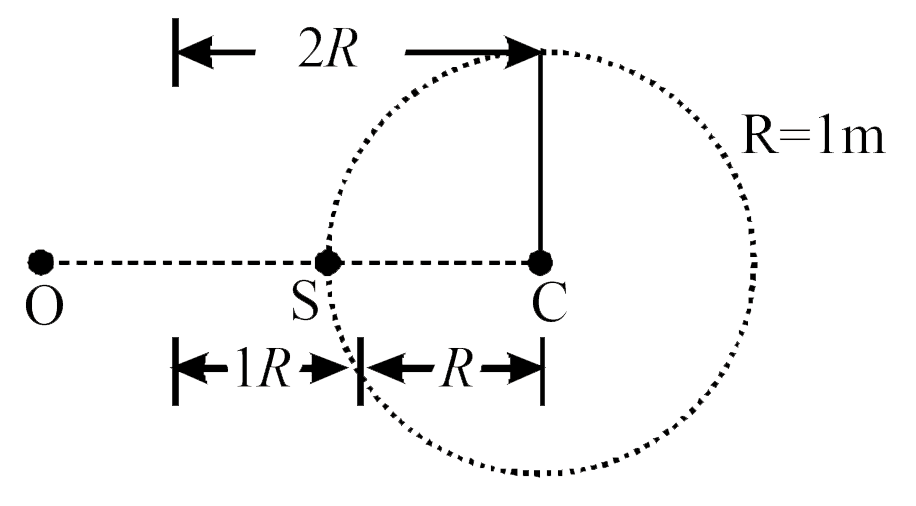
Starting from initial moment, the source moves through an angular displacement 180∘. Intensity of the sound as observed by the observer decreases by a factor of –
View SolutionIn Fig. 3.12 a particle moves along a circular parth of radius r. It starts from point A and moves anticlockwise. Find the distance travelled by the particle as it : moves from A to C
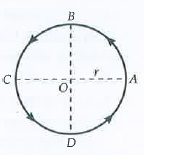
View SolutionIn Fig. 3.12 a particle moves along a circular parth of radius r. It starts from point A and moves anticlockwise. Find the distance travelled by the particle as it : moves from A to B
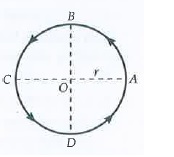
View SolutionTwo monochromatic (wavelength = a/5) and coherent sources of electromagnetic waves are placed on the x-axis at the points (2a,0) and (-a,0). A detector moves in a circle of radius R(gtgt2a) whose centre is at the origin. The number of maxima detected during one circular revolution by the detector are
View Solution
